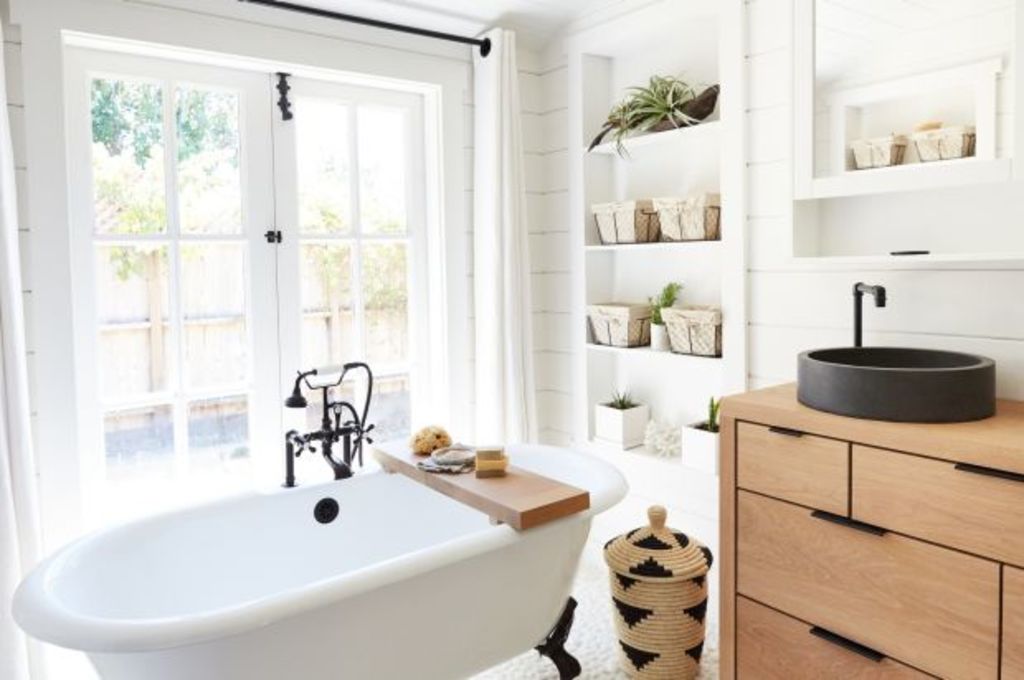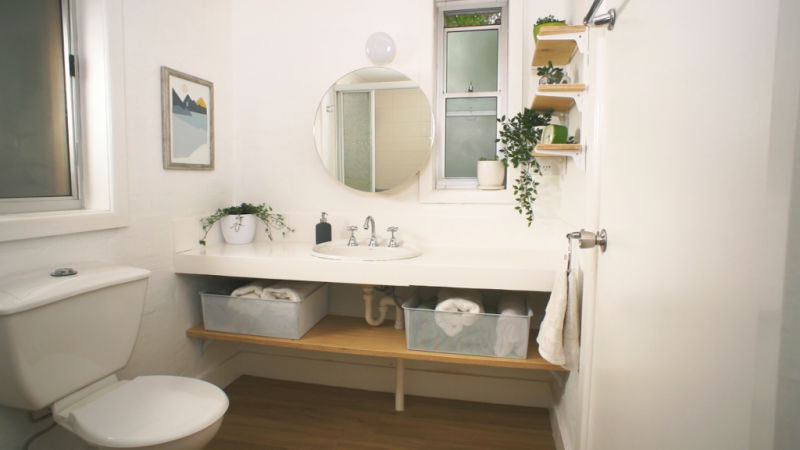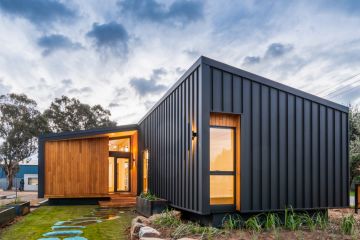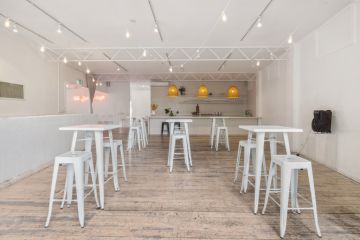What to consider when refreshing your bathroom for sale

When it comes to selling a home, it can be easy to neglect the details in favour of the big picture. “Bathrooms have the potential to dramatically shift a home’s impact,” says Kylie Dorotic, co-director at Golden. “Refreshing a bathroom should always be considered when looking to enhance a property for sale.”
Knowing your target market is perhaps the most crucial element in clarifying which features to address.
“A well-designed bathroom considers lifestyle to ensure that investments are made in the right places,” says Dorotic. “A shared bathroom in a family home might benefit most from refreshing storage and joinery, while a bathtub will always hold appeal for young families. In a high-end home, updating with premium finishes and hardware can elevate a master bedroom en suite.”
Regardless, respecting your bathroom’s original form while providing contemporary comfort is key. “Ensuring that quality and amenity aren’t compromised, by aligning your design objectives with your investment, is crucial to a successful outcome,” says Dorotic.
We asked the experts what the three rules are for tackling a bathroom renovation that really delivers.
Rule one: Let the buyer influence your layout
When assessing spatial considerations, focus on the three essential high-functioning areas all bathrooms require – bathing, vanity and dressing zones. Take into consideration the separation between wet and storage areas, and remember that changing the layout of your plumbing is costly and time consuming, so focus instead on utilising what is already in place.
“Buyer demographic is crucial here,” says Anka Baric from Luxe Property Styling. “If you are targeting young families, factor in lots of storage, incorporating it in the vanity, mirror and shelving.”
- Related: Budget-friendly ways to revive your kitchen
- Related: Former ballerina taking bathroom world by storm
- Related: Inside Rebecca Judd’s bathroom renovation
No matter what size the room, maximise floor space by freeing it up as much as possible. “Recessing the toilet and vanity will instantly make the bathroom feel bigger and increase floor space,” says Baric.
Removing a bath to expand the shower area can create instant space. “If your home includes an en suite, remember to keep a bath tub in the main bathroom,” says Baric.
Before and after of a project by DIY specialist Natasha Dickins of Little Red Industries. Download the worksheet for more information on how it was achieved.
A small-enclosed shower recess can be successfully swapped for a more generously sized walk-in shower, which without a step-up, makes the space look larger. “A frameless glass shower also makes the room feel more spacious,” says Justine Wilson from Vault Interiors.
Rule two: Restrict your palette to white
Not only does a white bathroom appeal to a broader market, it’s the ideal option if your bathroom is poky, lacks natural light, or your budget is bare.
“Look for the right shade of white,” says Baric. “I like Resene Alabaster. It’s beautifully soft and refreshes without appearing stark.”
Match your ceiling and wood trims with your home’s overarching palette. “A crisp white ceiling reflects light better than a darker colour,” says Wilson, “and doors are usually best painted white to allow the visual focus to be the vanity or bath.”
Keep tiles white on the walls and floors, swapping out white grout that is prone to grubbiness, for black as a chic and low-maintenance option. “White gloss tiles on the walls, or as a feature wall, make a strong statement,” says Wilson. “Stick to matte tiles for flooring though. They are less slippery.”

Given a renovation’s timeframe is often dictated by suppliers, an all white palette can prove both budget and time friendly, as minimalistic white tiles, bench tops and vanities are readily available. Being able to quickly access your material of choice, means eliminating delivery waiting times, and seeing your project move along as quickly as possible.
Rule three: Upgrade your hardware
“Updating with new hardware can be a smart investment and provide a refreshed, contemporary aesthetic,” says Dorotic.
Resist choosing fixtures that might polarise potential buyers. “Keep the target market for your home as broad as possible,” says Baric, “[don’t] narrow it down to appeal to a select few.”
Choose your hardware in line with your home’s aesthetics. “If it is classic, stick to timeless fixtures and tapware,” says Wilson. “In a retro-style bathroom, try and match with the original hardware, and if modern opt for contemporary models.”
Anna Rees from The English Tapware Company agrees. “Anything goes in terms of style whether it is country, classical or industrial, so long as the fittings are chosen to suit.”
Looking for more inspiration? Remember that it can often be the small details that draw a buyer’s eye.
- Add a small potted orchid in a classic bathroom, or a vase of glossy green leaves in a modern one
- If tiling looks tired, a good grout clean works wonders
- Hang new luxurious towels
- Invest in high-end pump soaps and hand lotions
- Add colour with vibrant glass bottles or ceramic vessels
- Use candles and scents for ambience
- Add wooden accessories to bring warmth to the space.
We recommend
We thought you might like
States
Capital Cities
Capital Cities - Rentals
Popular Areas
Allhomes
More









